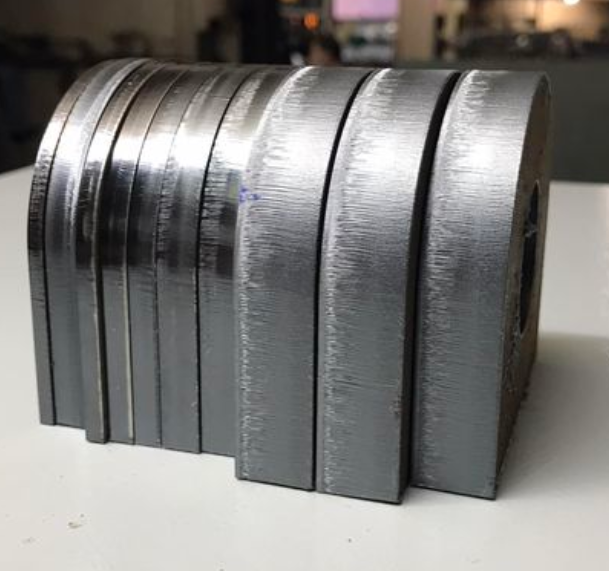How to quickly understand the focal position in laser cutting?
Release time:
2024-12-20
The "focal position" in the process parameters is usually understood as the place where the laser energy is most concentrated.
Understanding Focal Position in Laser Cutting Machines: Optimizing Performance for Precision Cuts
In the world of laser cutting machines, one of the critical parameters that operators must consider is the "focal position." This term refers to the specific point where laser energy is most intensely concentrated, directly influencing the quality and efficiency of the cutting process. The manipulation of focal position—whether positive or negative—can yield different outcomes, particularly when dealing with various materials and surface finishes.
When operators input a positive number into the focal position parameter, the laser focus shifts upward, positioning it near the top of the material being cut. This method is known as "positive focus cutting." Typically employed when cutting polished or reflective surfaces, such as metals with a high sheen, positive focus cutting allows for a slower speed while ensuring high process quality. The increased focus at the top of the material allows for a clean entry, but it comes with its challenges. If the focus is set too high, the energy delivered to the bottom of the workpiece becomes insufficient, leading to incomplete cuts. This can result in unsightly slag—molten material that fails to be ejected from the cut—and can also put undue stress on the cutting nozzle, which is prone to overheating under such conditions.
Conversely, when a negative number is entered into the focal position settings, the laser focus shifts downward, centering it within the medium's thickness. This technique is referred to as "negative focus cutting." It is often regarded as the optimal setting for cutting through a variety of materials, offering both speed and stability. By positioning the focal point in the middle of the plate, the laser achieves a balanced energy distribution, allowing for faster cutting speeds while minimizing the risk of issues such as slag accumulation or uneven cutting edges. However, operators must exercise caution; if the focus is set too low, the result can be a narrow slit that complicates the slag removal process and increases the likelihood of the slag hanging onto the cut surfaces.
As industries increasingly turn to laser cutting machines for their precision and versatility, understanding the implications of focal positioning has never been more crucial. Each material presents unique challenges and opportunities; therefore, operators must remain vigilant about how adjustments to the focal position impact their results. The choice between positive and negative focus cutting requires a thorough understanding of the material properties, desired cut quality, and specific production requirements.
Moreover, it is essential for operators to continuously monitor and adjust their parameters based on real-time feedback from the cutting process. This adaptive approach not only enhances the quality of the cuts but also prolongs the lifespan of the laser cutting machines, reducing maintenance costs and downtime.

In conclusion, the focal position is a fundamental aspect of the laser cutting process that cannot be overlooked. Whether utilizing positive focus cutting for high-sheen materials or opting for negative focus cutting for general applications, operators must be adept at navigating this critical parameter. By doing so, they ensure that their laser cutting machines perform optimally, delivering precision cuts that meet the rigorous demands of modern manufacturing. This understanding is vital for any organization looking to harness the full potential of laser technology in their cutting applications.
Latest News
Laser Plate Cutting Machines vs. Traditional Cutting Methods: A Comprehensive Comparison
Laser Plate Cutting Machines vs. Traditional Cutting Methods: A Comprehensive Comparison Table of Contents 1. Introduction to Cutting Technologies 2. Understanding Laser Plate Cutting Machines 3. Overview of Traditional Cutting Methods 4. Efficiency Comparison of Laser vs. Traditional Cutting 5. Precision and Quality of Cuts 6. Cost Analysis: Laser Cutting vs. Traditional
2025-06-25
Revolutionizing Surface Cleaning: The Advantages of Backpack Laser Cleaning Machines
--- In recent years, the manufacturing and packaging sectors have witnessed a groundbreaking advancement in cleaning technology—the backpack laser cleaning machine. This innovative device is designed to provide an effective solution for removing contaminants, rust, and old coatings from various surfaces. It employs the power of laser technology, which is not only efficient but also environmentally
2025-06-20
The Future of Packaging: Luggage Box Laser Cleaning Machines Explained
The Future of Packaging: Luggage Box Laser Cleaning Machines Explained Table of Contents 1. Introduction to Luggage Box Laser Cleaning Machines 2. Understanding Laser Cleaning Technology 3. Applications of Luggage Box Laser Cleaning Machines 4. Advantages of Using Laser Cleaning Machines in Packaging 5. The Role of Laser Cleaning Machines in Sustainable Packaging 6. Future
2025-06-15
The laser marking machine is a remarkable device. It precisely etches or marks various materials with laser beams. It offers high accuracy, permanence, and flexibility.
2025-06-11
Revolutionize Your Cleaning Process with Laser Cleaning Machines
In the realm of manufacturing and packaging machinery, maintaining cleanliness is crucial for optimal performance and longevity. One of the most innovative solutions available today is the laser cleaning machine. This technology utilizes high-powered laser beams to effectively remove contaminants, rust, and other unwanted materials from various surfaces, making it a game-changer in industrial clea
2025-06-10
Top Features to Look for in an All-in-One Laser Marking Machine
Top Features to Look for in an All-in-One Laser Marking Machine In today's fast-paced manufacturing environment, **laser marking machines** have emerged as pivotal tools for a wide range of industries. Whether you are engraving identifiers on products or marking barcodes for inventory management, the efficiency and precision of a laser marking machine can significantly impact your operations. Howe
2025-06-05




